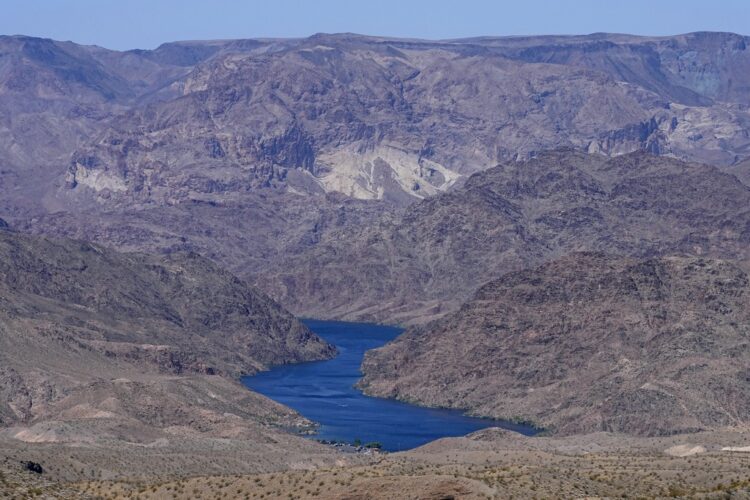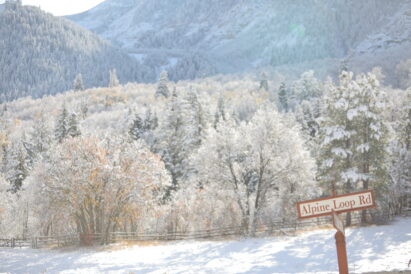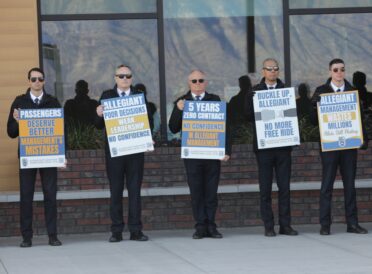‘Getting down to the wire,’ conservation groups try to pump up Colorado River negotiations

Matt York, Associated Press
The Colorado River cuts through Black Canyon, June 6, 2023, near White Hills, Ariz.More than three decades ago, water managers in Southern Nevada launched a plan to pipe groundwater from hundreds of miles away to augment Lake Mead’s water supply. The plan fell through and the region moved on, implementing major water conservation efforts instead.
A coalition of conservation groups say Nevada’s history can offer hope as water managers across western states negotiate new rules for sharing the Colorado River’s dwindling water supply.
The Great Basin Water Network, Living Rivers-Colorado Riverkeeper, Utah Rivers Council, and the Glen Canyon Institute released a report Wednesday with several recommendations they say would prevent the continued over-consumption of the river’s water.
States reliant on the river are approaching a 2026 deadline to decide how to manage the river, and they have until mid-November to reach a preliminary agreement or risk federal intervention.
With only weeks until the earlier deadline, Colorado River basin states remain at odds over how to manage the river that serves 40 million people across the West. Those disagreements largely center on which half of the basin should decrease its water use, and by how much.
States are split into two camps, the Upper Basin – Colorado, Utah, Wyoming and New Mexico – and the Lower Basin – California, Arizona and Nevada.
But states, experts and policymakers do agree on one thing: the river is overallocated.
Chronic overuse, drought and rising temperatures linked to climate change have shrunk water flows. The river has lost nearly 20% of its natural flows in the past quarter century. Hydrologists say it could lose another 20% in the coming decades.
The report by the coalition of conservation groups highlights nine recommendations on how to permanently reduce water use on the Colorado River as supplies shrink.
Those recommendations include preventing new dams and diversions, sharing water cuts among states, improving hydrology data, increasing water recycling, stabilizing groundwater decline, preserving endangered species, and improving agricultural irrigation.
Kyle Roerink, the executive director of the Great Basin Water Network, said the recommendations are meant to confront difficult “hydrologic realities and the legal realities” as Colorado River negotiations stall and federal deadlines near.
“Things are so tense right now, nobody wants to upset the other side. They are divided. So nobody wants to say anything meaningful in public,” Roerink said.
“Here we are really getting down to the wire,” he continued.
Tense negotiations have also created a lack of public transparency as states develop the new management guidelines, said Roerink. When the current Colorado River guidelines were developed in 2007, public participation was significantly more robust, said Roerink.
“Now we’re just getting nothing,” he added.
A major factor that needs to be considered during negotiations is the planned development of new dams and diversions that could lead to future legal conflicts, says the report. The Great Basin Water Network tallied more than 30 project proposals in the Upper Basin that could pull more than a million acre feet from the Colorado River if constructed.
Rather than developing infrastructure to pull more water from the river, the report recommends Upper Basin states create water curtailment plans to establish a “clear-cut understanding of what entities have to cut during a shortage.” Lower Basin states are already subject to curtailments under the current operation guidelines.
Existing dams, like Glen Canyon Dam, will need to be modified to adapt to lower stream flows, says the report.
Water in Lake Powell needs to pass through Glen Canyon Dam to reach Lower Basin states, but when the lake dips below a certain elevation significantly less water can pass downstream due to the dam’s engineering. In 2023, water levels in the lake came within 30 feet of that benchmark elevation.
The coalition asks the Bureau of Reclamation to include modifications to Glen Canyon Dam as part of the ongoing negotiations.
A lack of data on the river’s hydrology could also prevent regulators from moving forward on a proposed plan to to apportion water usage in the Upper and Lower Basin based on natural flows, as opposed to projected flows and historical agreements. The report says agencies currently lack the means to quickly and accurately measure natural flow data. Without that data water losses associated with the movement and storage of water in the system, including evaporation, will be difficult to measure, says the report.
Groundwater systems will also need to be considered when determining natural flows, says the report. A recent Arizona State University study found the Colorado River Basin lost approximately 27.8 million acre-feet of groundwater between 2002 and 2024, averaging a loss of about 1.3 million acre-feet per year.
State and federal regulators will need to consider how groundwater pumping could limit Colorado River water availability and harm the overall state of the river system, the report says.
The report also recommends federal, state, and local governments tackle municipal water waste and invest in water recycling. The Southern Nevada Water Authority has implemented a number of successful policies to reduce water waste that can serve as a blueprint for other southwest water agencies, says the report. The water authority has restricted watering to certain days to reduce evaporation, helped homeowners convert turf lawns to drought-resilient landscaping, and increased water rates for the region’s largest residential water users.
This story was originally produced by Nevada Current, which is part of States Newsroom, a nonprofit news network which includes Utah News Dispatch, and is supported by grants and a coalition of donors as a 501c(3) public charity.



